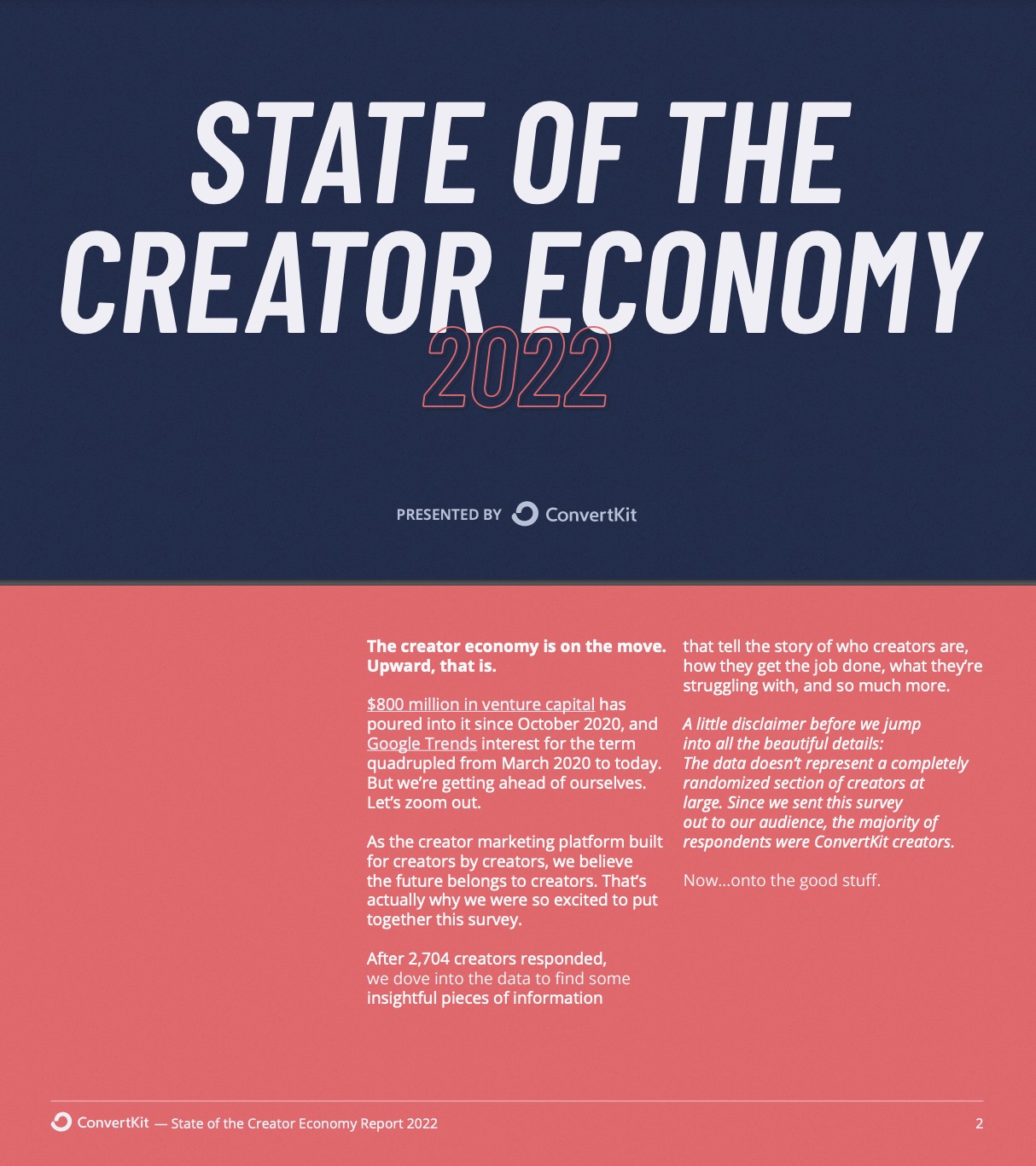State of the Creator Economy Report 2022
The creator economy is on the move. Upward, that is.
$800 million in venture capital has poured into it since October 2020, and Google Trends interest for the term quadrupled from March 2020 to today. But we're getting ahead of ourselves. Let's zoom out.
As the creator marketing platform built for creators by creators, we believe the future belongs to creators. That's actually why we were so excited to put together this survey.
After 2,704 creators responded, we dove into the data to find some insightful pieces of information that tell the story of who creators are, how they get the job done, what they're struggling with, and so much more.
Get the full report
We're just scratching the surface. Download the full report to get more insights into the current state of the creator economy.


Ready. Set. Send.
Kit flexes with you as you grow. Manage up to 10,000 subscribers for free, or upgrade to grow an unlimited list and access all functionality.